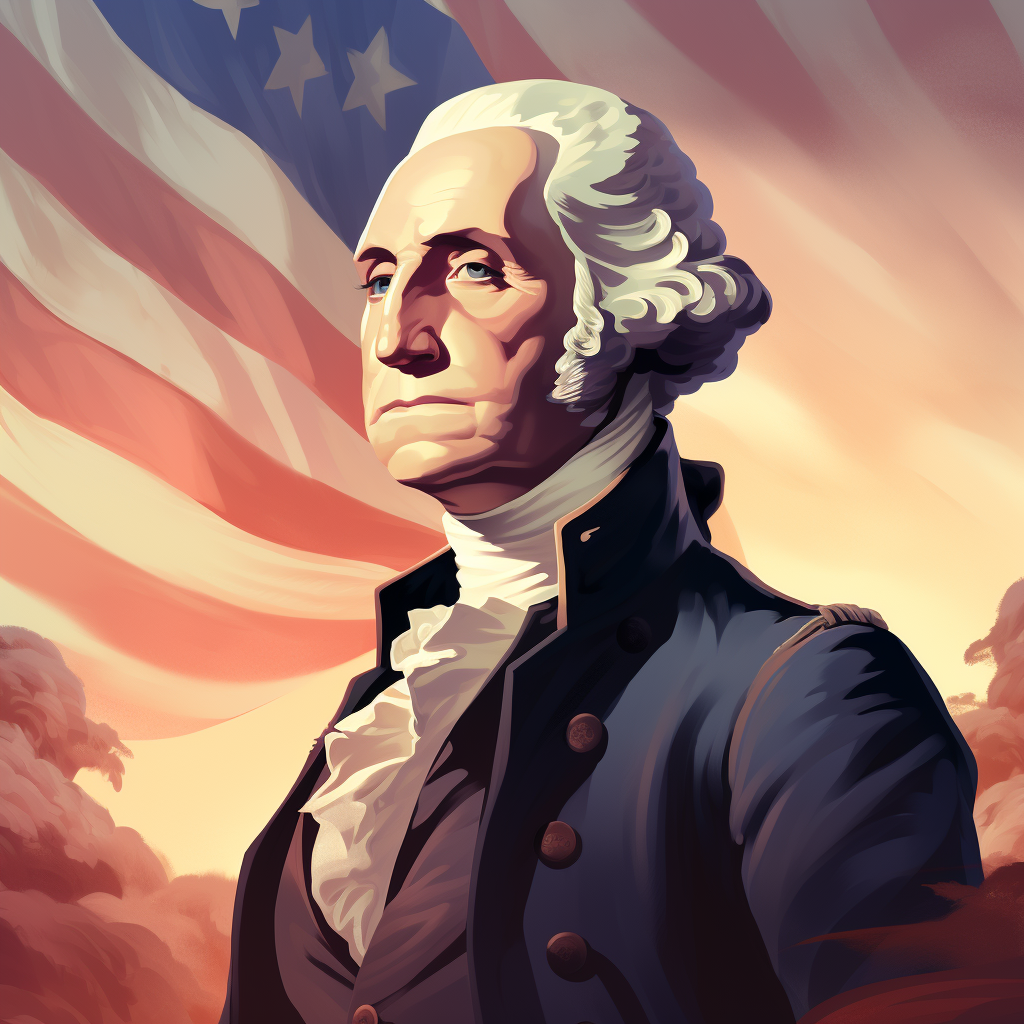George Washington: Leading the Continental Army

George Washington's leadership of the Continental Army during the American Revolution epitomizes leadership in adversity.
His resilience and strategic acumen, demonstrated in leading a nascent and often under-equipped army against the formidable British forces, offers enduring lessons in overcoming challenging circumstances with determination and ingenuity.
Factual Details of Washington Leading the Continental Army
Era: 1775-1783
Location: Thirteen Colonies, North America
Event: George Washington's Leadership in the American Revolution
Appointed as the Commander-in-Chief of the Continental Army, George Washington faced daunting challenges. He had to build an army from scratch, often struggling with shortages in supplies, training, and manpower. Despite these hurdles, Washington's leadership was characterized by strategic foresight, unwavering resolve, and an ability to inspire his troops, culminating in the eventual triumph against British forces and the independence of the United States.
Key Outcomes:
- Successful navigation of the Continental Army through various adversities.
- Development of innovative strategies and tactics to counter British military superiority.
- Washington’s embodiment of leadership resilience, inspiring his army and the emerging nation.
Leadership Lessons from Washington’s Continental Army Command
- Resilience in the Face of Adversity:
- Washington's experience highlights the importance of resilience and steadfastness in overcoming seemingly insurmountable challenges.
- Strategic Flexibility and Adaptability:
- His ability to adapt military strategies in response to changing circumstances demonstrates the value of flexibility and ingenuity in leadership.
- Inspiring and Motivating Under Challenging Conditions:
- Washington’s leadership was pivotal in maintaining troop morale and commitment during times of hardship, underscoring the leader's role in inspiring and motivating others.
- Long-term Vision and Perseverance:
- His unwavering focus on the long-term goal of independence, despite immediate setbacks, exemplifies the importance of maintaining a long-term vision.
- Effective Resource Management:
- Washington's management of scarce resources highlights the need for effective resource allocation and maximization in challenging environments.
How Today's Leaders Can Use This Lesson
Adapting to Today’s Context:
Contemporary leaders can draw valuable insights from Washington's leadership during the American Revolution:
- Recognize the critical role of resilience and perseverance in navigating organizational or personal challenges.
- Develop the ability to adapt strategies and approaches in response to evolving situations or obstacles.
- Focus on inspiring and motivating team members, especially during periods of difficulty or uncertainty.
- Maintain a clear long-term vision and goal, even when faced with immediate setbacks or challenges.
- Practice effective resource management, making the most of available assets and opportunities in constrained environments.
Concluding Thoughts
George Washington's leadership during the American Revolution stands as a powerful example of steering an organization through adversity with resilience, strategic acumen, and inspirational leadership. His legacy offers timeless lessons for modern leaders facing their unique challenges and obstacles.
Your Reflection
Reflect on Washington’s command of the Continental Army and consider:
- How can you apply resilience and strategic flexibility in your leadership role?
- In what ways can you inspire and motivate your team during challenging times?
- How can maintaining a long-term vision aid in navigating immediate adversities?
- What strategies can you employ to effectively manage and maximize limited resources?



